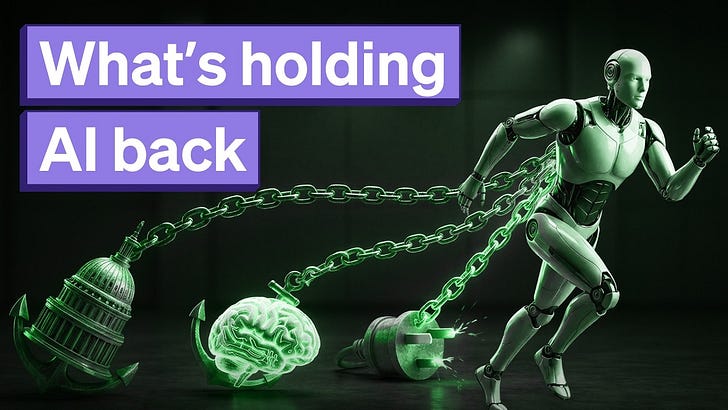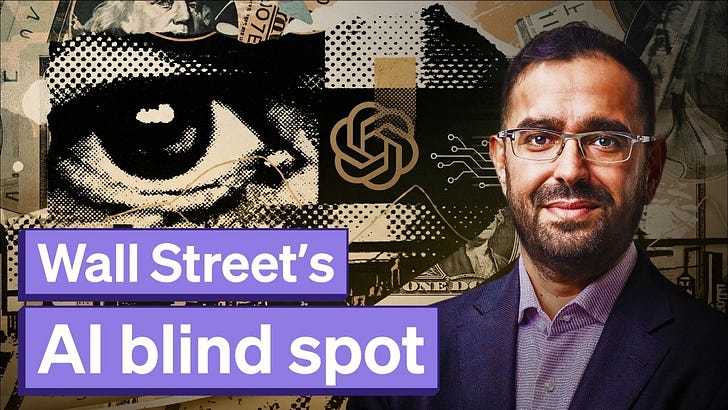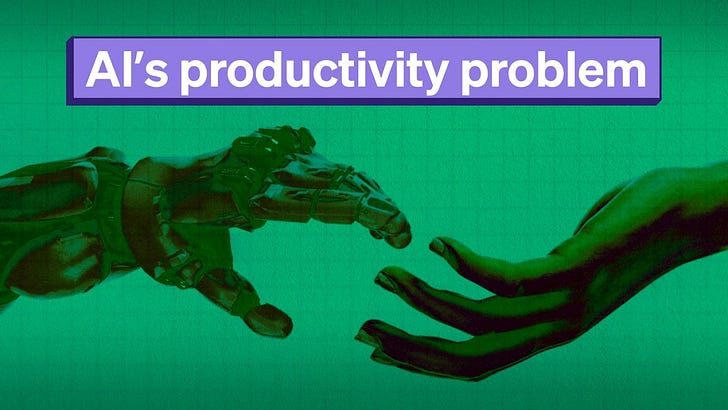As we wrap up the year, I’m speaking with some of my peers to understand what they expect of AI in 2025. So far, I published my conversations with SemiAnalysis’ Dylan Patel and Ethan Mollick.
The latest conversation with Air Street Capital and Air Street Press’ Nathan Benaich offered both a look-back at the remarkable year we’ve had and a forward view on 2025. From runaway consumer adoption to evolving enterprise moats, from still-elusive AI-driven drug breakthroughs to the renewed vigour in robotics, several core themes stood out. I’ve included some explicit predictions and aspirations Nathan shared for next year.
1. Frontier models & AI at scale
In 2024, we witnessed the astonishing growth of frontier models and their deployment on a massive scale. OpenAI’s GPT-4 and GPT-4 o1, Anthropic’s Claude and Google’s Gemini have all demonstrated that being “at the frontier” is increasingly the price of admission.
Consumer adoption & commercial scale:
Adoption soared—ChatGPT pulled in 305 million weekly users, making it one of the world’s top-ten websites. Enterprise spending on genAI leapt to $13 billion in 2024 from about $3 billion in 2023. Prediction for 2025: Usage growth continues to climb even faster as organizations and consumers build the new workflows and habits needed to make these tools indispensable. We may see the first genuinely “agentic” consumer product that hits top App Store rankings, built by a non-engineer leveraging frontier models.Consolidation around big players:
Both Nathan and I reflected that we increasingly suspect: if you’re not building at the leading edge of model capability, you risk irrelevance. Prediction for 2025: The global AI market consolidates further around a handful of frontier model providers who dominate the ecosystem, much like the major cloud providers do today.
2. Consumers, voice and infinite worlds
On the consumer side, we have reason to believe 2025 will be the year of AI-enabled workflows that feel truly natural. Voice, multimodality and integration into daily routines—like transcribing my morning thoughts during a commute—are becoming routine.
Voice, personal workflows, and the companion paradigm:
I’ve transformed how I work by using AI for voice input and robust note structuring. Nathan creates simple voice clones and was enthusiastic about real-time speech-to-speech translation. Aspiration for 2025: Real-time speech translation between any two languages in near-zero latency will appear in widely available consumer products. We’ll also see at least one “companion” application that archives large swaths of our daily life—creating a personal assistant that can reflect and reason on our behalf.Generative gaming and culture:
Nathan envisions a fully generative video game environment that can create infinite levels, worlds and narratives on the fly. Aspiration for 2025: A breakout generative game—built around AI’s infinite creativity—will captivate millions, introducing a new gaming paradigm where storylines evolve dynamically as players interact with fully AI-driven non-player characters and settings.
Home robotics and luxury automation:
I’m starting to see a plausible market for humanoid robots in private homes as a luxury convenience—unloading dishwashers, doing routine chores. While Nathan remains more skeptical, the idea of a premium “human-compatible” domestic robot no longer seems outlandish. Aspiration for 2025: At least one humanoid (or human-like) domestic robot prototype will launch commercially, marketing itself as a high-end convenience product for busy households.
3. Accelerating science & drug discovery
While AI accelerates lab automation and data analysis—improving reproducibility and speeding up processes—the promised “AI-designed blockbuster drug” is still in the pipeline. Clinical timelines and regulatory hurdles do not compress easily.
Quiet gains in lab productivity:
Automation in experiment analysis, grant writing, and data crunching are making scientists more efficient. Prediction for 2025: We will see some early-phase clinical trial successes that can credibly claim significant AI contribution in molecular discovery. However, the holy grail—a major marketed drug that can only exist because of AI-driven design—likely remains a few years away.
4. Geopolitics, funding and the sovereign question
As training costs skyrocket and models require unimaginable scale, questions mount… Who funds these massive compute requirements? Will nation-states view these labs as strategic assets, akin to telecoms or chipmakers?
National interest & AI labs:
Nathan raised the scenario where the next hundred-billion-dollar scale training run could require sovereign wealth funds or direct government investment.
Prediction for 2025: We’ll see at least one leading AI lab form a significant funding partnership with a sovereign fund or government entity, prompting debate about “foreign influence” and “AI sovereignty.”
5. From explosive capability gains to refined utility
We’ve grown numb to what was once astonishing—perfect speech synthesis, infinite text generation, zero-shot coding. The capabilities of models now surpass human levels in many benchmarks. The next major shifts may be subtler, or simply less obviously spectacular.
Normalization of miracles:
No one is impressed anymore by merely passing a tough exam or producing near-human audio clones. The bar is sky-high. Prediction for 2025: While frontier models will improve, the breakthroughs will feel more incremental than shocking. Instead, widespread adoption and practical integration into every aspect of work and personal life will accelerate, reshaping productivity patterns and business strategies across sectors.









